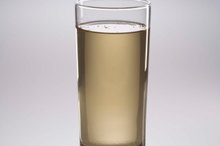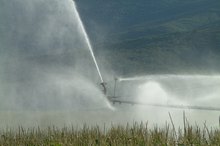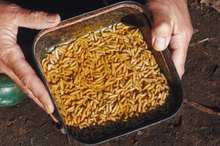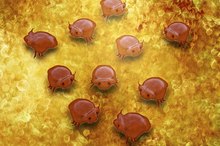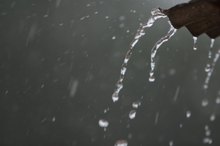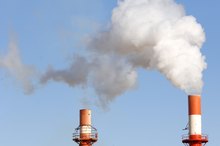What Are the Dangers of Living Near a Wastewater Treatment Facility?
Cornell University’s “Health Hazard Manual: Wastewater Treatment Plant and Sewer Workers” by Nellie J 1. Brown outlines the dangers faced by workers at treatment plants; in conditions that are ideal for the pathogen or organism, some of these dangers can be extended to the communities surrounding wastewater treatment plants. Responsible management has been shown to reduce the dangers associated with the wastewater treatment process, but those living in proximity to them would be well served to be aware of the potential risks, however small they are.
If you are experiencing serious medical symptoms, seek emergency treatment immediately.
Airborne Hazards
Chemicals from wastewater treatment facilities become airborne when they're air-stripped. Air-stripping occurs when organisms, chemicals or particles in water find their way into air, where they can subsequently be inhaled. The water must be splashed or somehow moved through the air for this to take place, something that occurs in the aeration and dewatering processes, which put droplets and particles into the air. Studies have shown that coliform bacteria and total organisms are more prevalent at night, and they're highest when it's windy or the humidity is above 35 percent. With the exception of mercury, hazardous metals can't be air-stripped.
- Chemicals from wastewater treatment facilities become airborne when they're air-stripped.
- Air-stripping occurs when organisms, chemicals or particles in water find their way into air, where they can subsequently be inhaled.
Respiratory and Gastrointestinal Infections
The Effects of Breathing Raw Sewage Fumes
Learn More
If particles, organisms or pathogens that are air-stripped are inhaled, they go through the bronchial tubes and lungs, are cleared from the lungs, and then swallowed. This can cause respiratory and gastrointestinal exposure. Some organisms pass directly into the bloodstream. Experts at Cornell University report that though air-stripping occurs during aeration and other processes, it occurs less at wastewater treatment plants because the particles tend to attach to solids rather than water 1. The effects of inhaled organisms vary from upper respiratory irritation accompanied by eye irritation to depression, central nervous system damage and severe systemic poisoning. Plant workers are often the first affected. If they realize they've been affected, they're able to alert managers to correct the problem.
- If particles, organisms or pathogens that are air-stripped are inhaled, they go through the bronchial tubes and lungs, are cleared from the lungs, and then swallowed.
Pests
Houseflies, as well as other pests such as cockroaches, can also present a health hazard for those living near wastewater treatment facilities. Flies land on the food they eat to taste it, and raw sewage attracts houseflies. The hairs on a single housefly can carry millions of pathogens, which are transferred to whatever the fly next lands on. National Small Flows Clearinghouse (funded by the U.S. Environmental Protection Agency) relates in its newsletter “Pipeline” that transferring these pathogens through flies and other pests is nowhere near as common as through drinking water or eating food that's been contaminated by sewage 2. Wastewater treatment facilities that treat and dispose of contaminants properly protect the communities surrounding them. Through proper maintenance of the facility, the spread of disease by flies, cockroaches, lice, mosquitoes, mice and rats can be controlled.
- Houseflies, as well as other pests such as cockroaches, can also present a health hazard for those living near wastewater treatment facilities.
- National Small Flows Clearinghouse (funded by the U.S. Environmental Protection Agency) relates in its newsletter “Pipeline” that transferring these pathogens through flies and other pests is nowhere near as common as through drinking water or eating food that's been contaminated by sewage 2.
Related Articles
References
Writer Bio
June Farquhar has been writing for newspapers and special publications in California since 1998. She's the recipient of a press club award for organizing and designing a 42-page "Red Ribbon Week" tabloid, which received recognition from the California State Assembly and the U.S. House of Representatives. Farquhar studied newspaper journalism at Bakersfield College.

